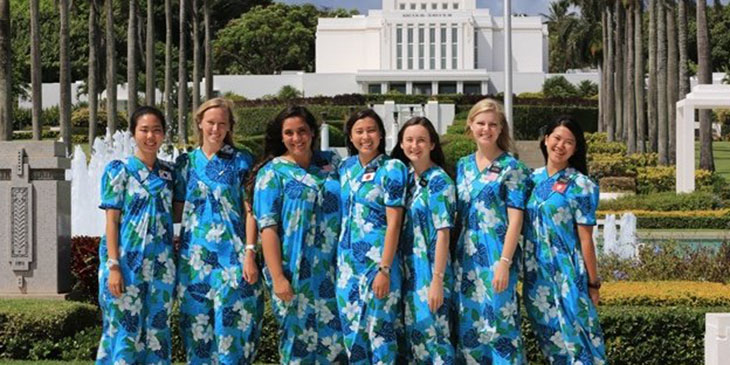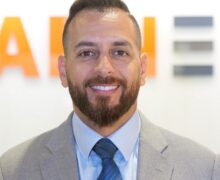Polynesian Culture Center: A Controversial Cultural Attraction for Hawaii Tourism

Happy 55th Birthday to the Polynesian Culture Center also known as PCC. PCC is a tourist attraction on the Island of Oahu in Hawaii but is not without controversy. Since 1963 the Polynesian Cultural Center has entertained educated and promoted the church of Jesus Christ to more than 40 million guests. This is big business, and it has been tax-free. Added to this is a culture of open discrimination.
A pushy taste of the Mormon religion has quietly become a ritual for most visitors to Waikiki with a costly day tour away to the Polynesian Culture Center. This tour should include a glimpse of the Mormon Temple in Laie. PCC is a must-see attraction for visitors to the Hawaiian Island.
A one -hour drive from Waikiki to the town of Laie on the Northshore will change the settings for tourists to hear the gentle sway of Hawaiian hula, the impossibly swift hips of Tahitian dancers: The Polynesian Cultural Center (PCC) offers them all to tourists from around the world. They come for entertainment and leave with an education after sampling the cultures of Hawaii, Tonga, Fiji, Samoa, Tahiti, the Marquesas, and New Zealand.
Today the Polynesian Cultural Center (PCC) is celebrating its 55th anniversary. In a press release issued by PCC, the center renewed its continuing commitment to showcase the traditions, arts, music, and cultures of Polynesia and its people.
The Polynesian Cultural Center was dedicated in 1963 but really got its start when then-LDS Apostle David O. McKay visited the Mormon plantation town of Laie, Hawaii, in 1921. He was inspired as he watched a group of children at a flag ceremony—children of many races from all over the world. He left with a vision of making the town “the center of the education of the people in these islands”.
Thirty-four years later Mormon President McKay dedicated the Church College of Hawaii, now Brigham Young University—Hawaii. He also dedicated the town of Laie that it would “become a missionary factor” and influence millions of people.
As of April this year the Church of Jesus Christ of Latter-Day Saints doesn’t want its people to be called Mormons anymore. According to a new style guide released in April, the church also does not want the name of the church shortened to LDS either. It wants people to say “the church” or “the church of Jesus Christ.” The term “Mormon” should only be used in a proper name like “The Book of Mormon.” This applies also to the 70,000 members of this church in the State of Hawaii.
Today PCC means big business with a strong religious twist and a goal to spread the Book of Mormon to everyone coming in touch with this institution. Some people see LDS as a cult. The rainbow of islanders performing is not equal to the rainbow of acceptance in the State of Hawaii, specifically when it comes to the LGBT community.
Students performing, operating and working at PCC are often from many poor Pacific Island. Without the help of the Mormon Church, these students would not have a chance to get the education given to them. This is good, but it comes with a hefty psychological and spiritual price tag.
“Fifty-five years ago, the Polynesian Cultural Center embarked on a journey our founders envisioned as a uniquely rare opportunity to educate the world about the magnificent people of Polynesia,” said Alfred Grace, president, and CEO of the Polynesian Cultural Center. “We celebrate this anniversary reaffirming our dedication to continually improve how our guests experience Polynesia by engaging with people proud to share their culture and heritage.”
Located in Laie and right next to PCC is a brand new Marriott Courtyard Hotel (The Marriott Family is Mormon), and Brigham Young University–Hawaii, a private University owned and operated by The Church of Jesus Christ of Latter-day Saints. BYU-Hawaii was founded in 1955 and offers programs in mathematics, liberal arts, and management.
Students need to commit to the honor code and LDS Church values. This code includes non-drinking, non-smoking, non-swearing, no sex before marriage.
Only 1.5% of students are from other religions and often pressured to convert in order to get the scholarship needed to study at Brigham Young University. With this conversion comes many hours of mandatory daily studies and rituals. This is a process becoming a routine for many years. The goal is obviously to spread the Church’s teaching to their nations, friends, and neighbors.
To leave the Church there is also a substantial emotional toll that leaving Mormonism can take. The Mormon community is very close and reliant on one another, so breaking out of that group can be fairly traumatic.
To earn the money to attend BYU students work at the Polynesian Culture Center dancing, performing and showcasing their heritage
As a church, this is the only money making attraction in Hawaii earning all tax-free revenue.
In April 2018 a group by the name “Rights Equal Rights” run by activist Fred Karger has compiled a 283-page complaint against the Mormon Church and Polynesian Cultural Center.
Karger alleges the Church takes advantage of its tax-exempt status. He claims top Polynesian Cultural Center executives use the center for their own personal and financial gain. He also claims the church discriminates against LGBT members and other minorities.
A spokesperson for the Polynesian Cultural Center at that time said the center declines to comment but emailed: The Polynesian cultural center is A non-profit organization, 100 percent of its revenue goes to daily operations and to support the education of its student-employees from neighboring Brigham Young University-Hawaii.
When it comes to LGBT, the Church of Jesus Christ of Latter-day Saints teaches that same-sex attraction is not a sin, but that acting on it is. The Mormon school’s stringent Honor Code forbids “not only sexual relations between members of the same sex but all forms of physical intimacy that give expression to homosexual feelings.”
Those who break it are widely expected to be disciplined. Those who uphold it say it’s easy to feel ashamed or unworthy.
A report obtained by eTN said: A master’s student in social work who is gay, Schilaty tried to be a “checklist Mormon.” He thought going on a mission could make him straight. But it didn’t. Neither did volunteering at the temple, nor reading the Bible, nor trying to date women in his ward nor going to BYU. “I felt imprisoned or trapped by the church’s teachings,” he said. “There were so many times I would have rather been dead and straight than alive and gay.”
The Polynesian Cultural Center has progressively expanded in size and guest experiences over time while remaining true to its original intent. It is anchored by six authentic island villages on 42 lushly landscaped acres, which is intersected by a scenic lagoon. At the villages, guests enjoy exhibits, engaging presentations, and hands-on activities while interacting with the native people of Hawaii, Samoa, Tahiti, Tonga, Fiji, and Aotearoa (New Zealand).
New guest experiences are continuously being introduced, upgraded and planned. Most recently, a new water show, Huki, was unveiled in August on the lagoon featuring a diverse array of canoes, including a long waka (Maori canoe) and outrigger canoes, complemented by special double-hulled vessels carrying drummers, dancers, singers, and storytellers.
source: eTN




